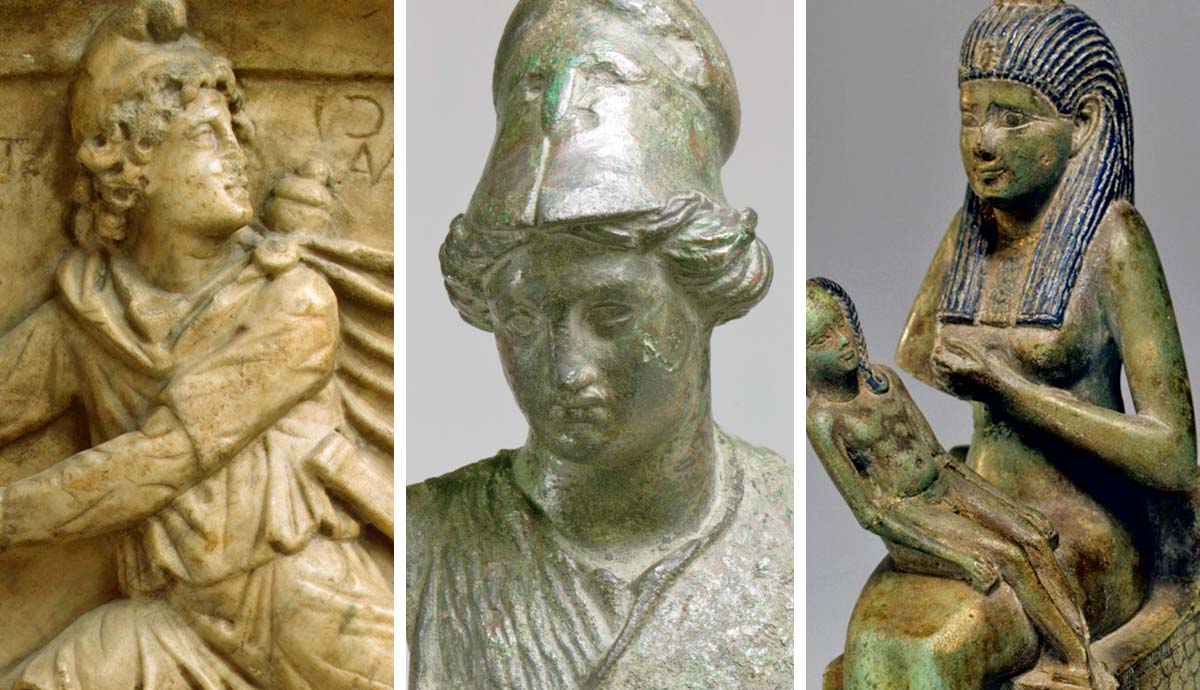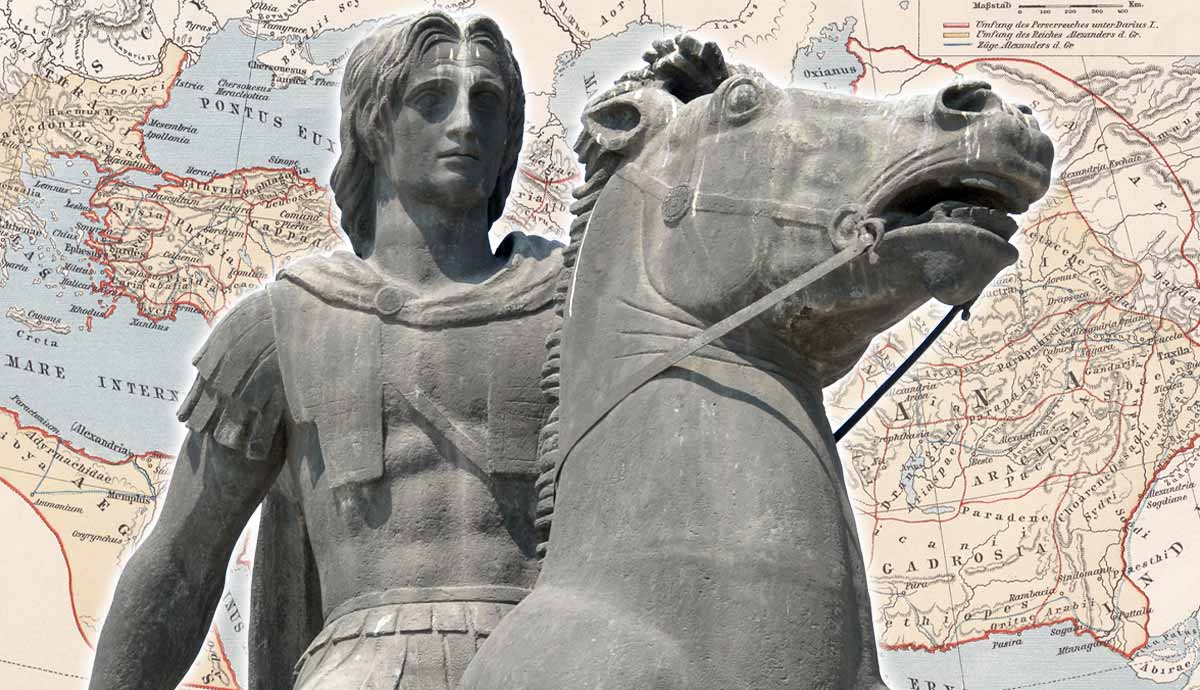
The Romans believed there were a myriad of gods that maintained the functioning of the universe, and not all of them were known to them. In their conquests of the Mediterranean and Asia Minor, they encountered many cultures that worshipped foreign deities. While some might assume that they would outlaw them, after all a Roman victory meant that their own gods were more powerful than their enemy’s, the Romans were surprisingly tolerant of other customs. On multiple occasions the Roman Pantheon incorporated foreign gods, giving them new, Latin names.
Rebranding a God

The Romans adopted deities from other cultures for centuries, since the dawn of the republic. Many of the most famous Roman gods weren’t even Roman at all but were taken from other Italic neighbors like the Etruscans or the Sabines. Others were lifted from Greek stories — Gods like Apollo or Hercules. The Romans took these foreign deities and gave them new names and Roman qualities to suit their needs.
The ways in which the Romans brought foreign gods back to Rome varied. Partly it came about through the movements of populations. As new peoples were incorporated within the state they brought with them their local gods. Politically, incorporating the local deity into the state religion enfranchised the new population and legitimized Roman rule.
Another method, called evocatio, was more deliberate. While at war the Romans would invoke the god of an opposing city to come over to their side and reside in Rome, where they would continue to be worshipped. Victory in battle was a direct confirmation that the god had agreed.
Finally, gods were brought over through necessity. Romans were a very pious people and their gods actively influenced their daily lives. To anger one had dire consequences. As a deeply utilitarian people, the Romans made use of every advantage they could, including offering prayer and sacrifice to foreign deities. Emperor Constantine famously won a decisive victory at the Battle of Milvian Bridge after he marked the sign of the Christian god on his soldiers’ shields. This was a defining moment in the history of the empire but was far from the first time a new god was introduced to the pantheon.
1. Cybele

Cybele, known to the Romans as Magna Mater, or Great Mother, was an Anatolian goddess of birth and spring. Worshipped since the first millennium BCE by many different names, Cybele came to the republic during the Second Punic War against Carthage.
The senate consulted the Sibylline Oracles which told that the Romans would not defeat Hannibal until the “Great Mother of Mount Ida” was brought to Rome. They understood this to mean the goddess Cybele. Sending an embassy to Pergamon they requested to take the goddess, represented as a black meteorite, back with them to Rome. The Romans went on to defeat Hannibal and in 191 BCE they erected a temple to Cybele on the Palatine Hill. At first, Roman men were forbidden from becoming priests to the goddess due to the practice of castration symbolizing the goddess’s lover Attis, but after three centuries Emperor Claudius lifted the ban.
2. Mithras

Mithras is somewhat of a mystery among the gods of the Roman pantheon, as he appeared in historical records in the late first century CE then just as quickly vanished by the fourth century CE. Most temples to the Romanized Mithras are located in the western parts of the empire with very few in the east, leading to debate among scholars as to the god’s true origins. The Romans themselves seemed to believe that he was Persian and they called Mithraism “the mysteries of the Persians.”
Among the Indo-Iranian cultures of the east, the god was known as Mithra, or Mitra, and was being worshipped as early as the first millennium BCE. Mithras is commonly depicted slaying a bull or with two torchbearers at his side, and he was associated with contracts and the sun.
3. Bacchus

Bacchus was a god of wine and revelry whose worship gradually took over from that of Liber, Rome’s native god of wine and fertility. Bacchus, or Dionysos, came to Rome by way of the Greek cities in Southern Italy, yet even in Greek tradition he was a foreign deity who came from the east.
Dionysus was born of Zeus and a mortal woman named Semele, but due to Semele dying while the god was still in the womb Zeus took the unborn Dionysus and sewed him into his thigh. When the baby had matured, Zeus removed the stitches and sent him off with Hermes to Mount Nysa in Asia. As an adult he was said to have wandered Syria and Egypt before returning to Greece.
4. Isis

Isis came to Rome via Egypt around the second century BCE. She was originally the protector of the Egyptian throne and was associated with magic. She was the mother of Horus and sister-wife to Osiris, and at the height of her influence was more important than the sun god Ra.
She had power over life and death, as seen in the myth when Osiris was killed by his brother Seth then chopped into pieces and scattered across Egypt. Isis collected the pieces and revived her husband, then magically conceived a child, Horus. In Rome, Isis became extremely popular among the lower classes and slaves, since her cult promised resurrection in the style of Osiris to its adherents.
5. Serapis

Serapis was the name given by Ptolemy I to the god Wsir-Hp, the Osirified Apis bull. He was a combination of Osiris, the Egyptian god of the underworld, and the Apis bull, believed to be the manifestation of the Memphite creation god Ptah. As Serapis, his cult spread outward from Alexandria.
His popularity grew in Rome, despite Augustus’s ban on foreign religious rites within the city, and he was worshipped together with Isis in the Iseum Campense. Under the Flavian emperors Serapis was even depicted on imperial coinage.
6. Juno (Regina)

Juno is the wife of Jupiter and queen of the gods. She is generally associated with her Greek counterpart Hera, and much of her iconography and attributes mirror the Greek goddess. Juno was the patron goddess of the Roman Empire yet she was not originally Roman. Many traditional Roman myths show the goddess as an antagonistic force. In Ovid’s Metamorphoses, during the reign of Rome’s founder Romulus, Juno unfastens the bolts of the city’s gates to allow for the Sabines to attack.
The goddess was imported from the Etruscan city of Veii, where she was known as Uni. As Livy recounts, the Roman dictator Camillus evoked the goddess before the city was captured, and after their victory the goddess herself was heard to have agreed to come back to Rome. A temple to Juno Regina (Queen of Veii) was then erected on the Aventine Hill. She is commonly depicted wearing a chiton and cloak, and her sacred animal was the peacock.
7. Trivia

Trivia, or Hecate to the Greeks, was a goddess of magic, crossroads, the moon, and necromancy. Her earliest appearance in literature is in Hesiod’s Theogony from the eighth century BCE where she is conceived of as one of the Titans, the generation of gods that ruled before the Olympians. In the Hymn to Hecate, she was given power over the earth, seas, and heavens, and it tells us that even Zeus did not deny her these powers.
By the Roman era, she was commonly depicted as being three-headed and three-bodied and has been associated with Diana and Selene due to the similarities the three goddesses share. She was usually invoked by her name “Trivia” as protector of travelers due to her association with crossroads.
8. Minerva

While people usually associate Minerva with her Greek counterpart Athena, she actually originated from the Etruscans as Menrva. To the Etruscans, as to the Romans, she was the goddess of war, wisdom, and crafts. In Rome, she was worshipped alongside Jupiter and Juno as the Capitoline Triad, the three main deities of the empire.
Through the fourth and third centuries BCE she was Hellenized and took on more of her Greek counterpart’s attributes. The Romans even appropriated the myth of her birth from the Greeks and attributed it to the formerly Etruscan goddess, contributing to misconceptions regarding her Greek origins. Regardless, the location of her temple on the Aventine Hill confirms that Minerva is an imported goddess. She was revered by traders, craftsmen, soldiers, artists, and philosophers alike.
9. Aesculapius

Aesculapius was a god of health and medicine imported to Rome from Epidauros, Greece, in 293 BCE. Due to a plague devastating the city, the Romans consulted the Sibylline Oracles, which told them that the plague would not end without the aid of Aesculapius. They sent an ambassador by the name of Quintus Ogulnius Gallus to Epidauros and once the god was brought to the city a sanctuary was established for him on Tiber Island.
Known to the Greeks as Asclepios, he was the son of Apollo and a mortal woman named Coronis. He was trained by the centaur Chiron in the art of medicine and hunting, and became such a skilled surgeon that he was not only able to save the dying but he could even bring the dead back to life. Zeus feared his ability and so struck him down with a thunderbolt.
10. Christ

Christianity began as a form of messianic Judaism in the forties CE after the crucifixion of Jesus of Nazareth. Christ’s apostles spread his message through the eastern Mediterranean, but it was Paul who had the most lasting impact due to his ability to speak and write in Greek, the lingua franca of the time.
When the Romans took notice of the budding Christians they persecuted them relentlessly. Being a monotheistic faith, Christians were forbidden from sacrificing to any other gods, and especially not to men. As such they refused to sacrifice to the imperial cult of the emperors. It wasn’t until the time of Constantine that Christianity became a recognized religion in the empire. In 380 CE, Emperor Theodosius made Christianity the official state religion of the empire.
Bibliography
Eric M. Orlin. (2002). Foreign Cults in Republican Rome: Rethinking the Pomerial Rule. Memoirs of the American Academy in Rome, 47, 1–18. https://doi.org/10.2307/4238789
Ovid. (43 B.C.-17 A.D. or 18 A.D.). Metamorphoses (C.Martin, trans). W. W. Norton & Company, Inc., 2005










